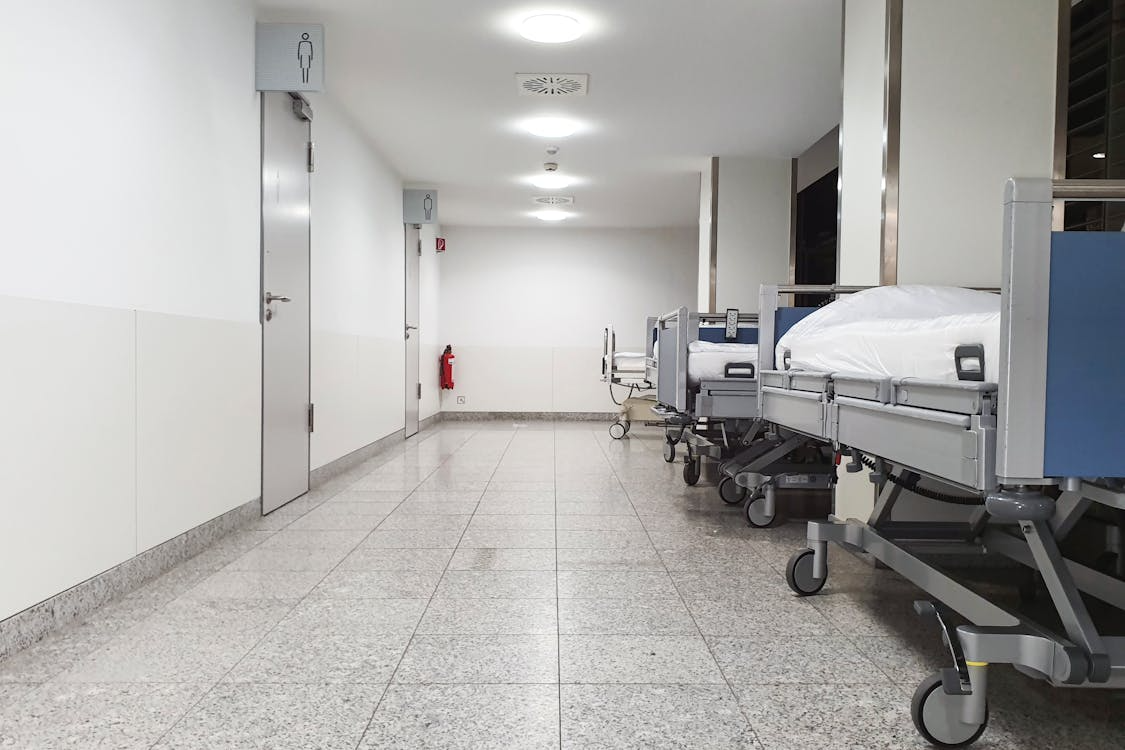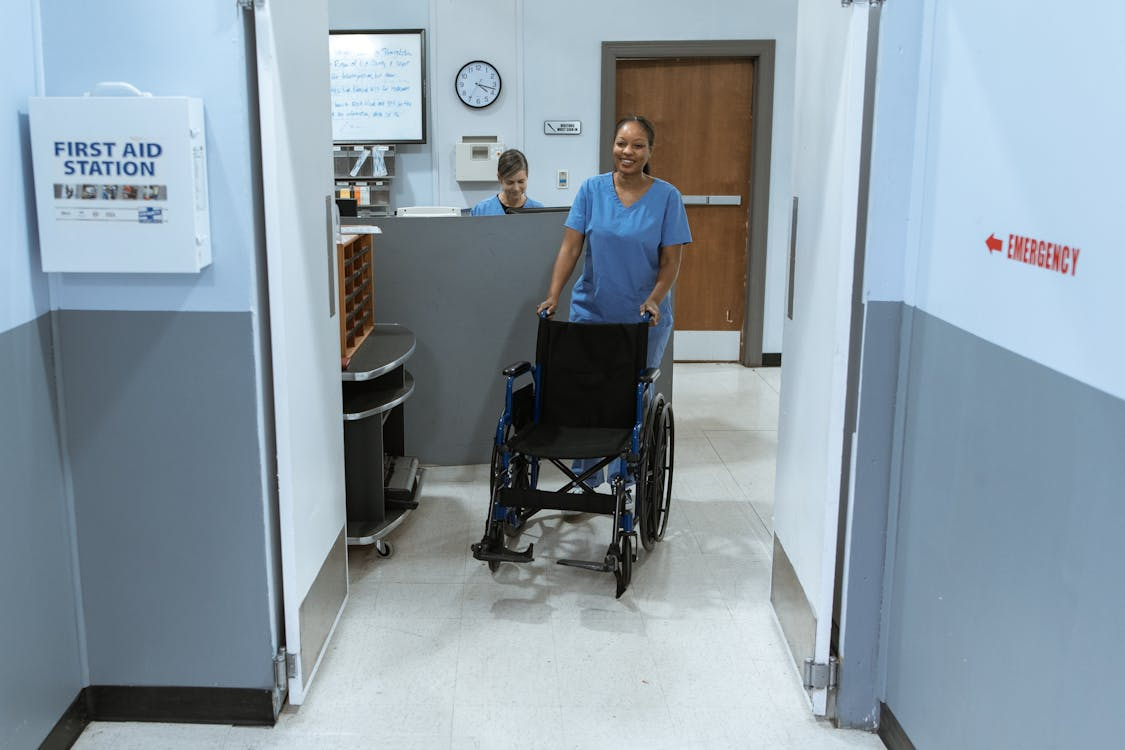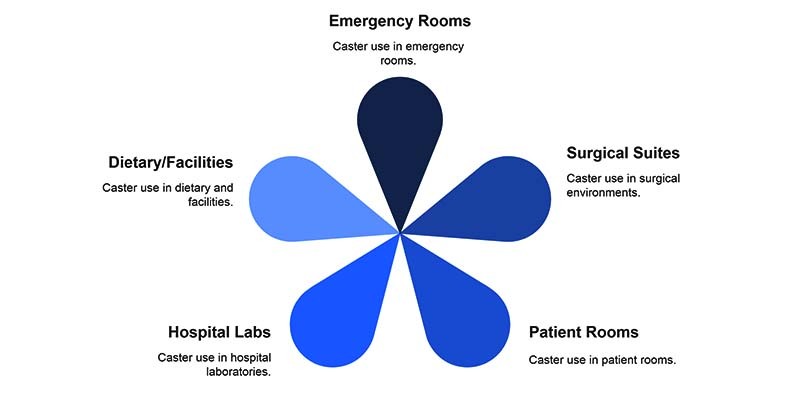How Small Caster Design Features Improve Hospital Efficiency in Big Ways
Jun 24th 2025
Introduction
In a hospital, every second counts—and so does every design decision. While much of the focus often falls on advanced medical equipment and staffing, the tools that support everyday movement behind the scenes are just as crucial. One of the most overlooked yet indispensable elements in hospital logistics is the caster—a small component that can make a big impact.
So, what are casters? Casters are the wheeled components mounted on the bottom of hospital beds, carts, medical tables, and equipment. These little wheels may seem minor, but they play a major role in how efficiently hospital staff can respond to patient needs, transport equipment, and maintain clean, quiet, and safe environments.
Well-designed medical casters and hospital caster wheels reduce physical strain on staff, minimize patient disruptions, and ensure smooth navigation through crowded or tight hospital corridors. From swivel casters wheels that allow effortless movement to stainless steel casters built for sterile environments, the design details of these components directly influence hospital workflow.
In this article, we’ll explore the subtle yet powerful design features of casters for medical equipment, the departments that benefit from them, how to choose the right options, and why even a simple caster for a table or casters for cart can contribute to big improvements in patient care and operational efficiency.
Whether you're managing a hospital facility, selecting equipment for a clinic, or upgrading mobility solutions in a lab, understanding these small design details can help you make informed, high-impact decisions.
Why Casters Matter More Than You Think in Hospitals

Hospitals operate under intense pressure—medical staff must act fast, move smoothly, and transport both patients and equipment without delay or disruption. In such a high-stakes environment, mobility isn’t a convenience—it’s a necessity. And that’s where hospital caster wheels come in.
From the moment a patient arrives in the emergency room to the time they’re wheeled into surgery or transported for imaging, casters for medical equipment are constantly at work behind the scenes. These small wheels carry enormous responsibility, attached to beds, monitors, ventilators, medicine carts, and even meal delivery trolleys.
The reality is, when casters perform poorly—when they squeak, lock up, skid, or mark floors—they don’t just cause frustration. They lead to inefficiencies, delayed care, increased noise levels, and even safety hazards. A stubborn wheel on a gurney can delay emergency care. A jammed caster on a crash cart can cost precious seconds. This makes it clear: medical casters aren’t an afterthought—they’re part of the foundation of hospital functionality.
Even something as routine as transporting files or linens across a corridor can become a burden when casters for carts are unstable or hard to steer. Over time, these small inefficiencies stack up, leading to physical fatigue for staff, damaged flooring, higher maintenance costs, and unnecessary noise pollution—all of which erode the quality of care.
That’s why leading hospitals increasingly invest in medical grade casters designed for smooth rolling, precise maneuverability, and silent performance. Whether it's a patient transport chair with casters for wheelchairs, a workstation using casters for a table, or a mobile supply rack fitted with swivel casters wheels, these components shape how work gets done—quietly and efficiently.
In short, if your hospital is relying on outdated or underperforming caster technology, you're not just rolling equipment—you're rolling the dice on productivity and patient care. Upgrading casters is a simple, cost-effective move that brings tangible improvements across departments.
Key Features That Improve Hospital Efficiency

A caster is more than just a wheel—it’s a system of parts working together to provide effortless movement, noise control, weight support, and safety. In hospitals, where carts, beds, and equipment are in constant motion, even the smallest design tweaks can make a big difference. Let’s look at the standout features in medical casters and how they support hospital efficiency.
a. Quiet, Non-Marking Wheels
In any medical setting, noise reduction is essential. Loud or rattling wheels can disrupt sleep in patient recovery rooms or increase stress in high-tension environments like ICUs. That’s why quiet casters made from materials like thermoplastic rubber (TPR) are ideal. These hospital caster wheels glide smoothly and silently over hard flooring without leaving marks.
The non-marking feature is more than a visual benefit—it reduces the frequency of floor maintenance, saving time and cleaning resources. Whether on casters for cart or medical workstations, quiet wheels contribute to a calmer, more efficient hospital environment.
- Use Case: Non-marking casters for medical equipment in neonatal units reduce cleaning cycles and minimize disturbance for newborns.
b. Swivel Casters with Locking Mechanisms
Hospitals often require equipment that can move in tight spaces and then stay firmly in place. Swivel casters wheels allow for 360-degree movement, making it easy to navigate around corners, tight corridors, and patient beds.
But mobility without control is risky. That’s where locking mechanisms come in. Total lock casters freeze both the wheel and the swivel, securing carts and beds during procedures or when parked on sloped floors. Directional lock casters offer straight-line tracking for easier pushing over longer distances.
Pairing swivel casters wheels with these locks creates both freedom and control—an essential balance for hospital workflows.
- Use Case: IV stands with heavy duty swivel casters offer mobility during setup and stability during use.
c. Antimicrobial and Easy-to-Clean Surfaces
Infection control is non-negotiable in healthcare settings. Caster materials that resist microbial growth—such as polyurethane wheels with antimicrobial additives or stainless steel housings—help hospitals maintain hygiene standards.
Designs that minimize crevices make cleaning easier and faster. Many stainless steel swivel casters are corrosion-resistant and can be cleaned with strong disinfectants without degrading, making them suitable for surgical environments.
- Use Case: Operating tables with stainless steel casters ensure sterile conditions while supporting heavy equipment.
d. Shock-Absorbing and Ergonomic Design
Casters with built-in suspension or soft-tread wheels reduce vibration when transporting sensitive equipment like diagnostic monitors or medication dispensers. This not only protects gear but also creates a smoother push, which reduces physical strain for hospital staff.
Ergonomically designed casters for equipment contribute to workplace safety, lowering the risk of repetitive strain injuries and improving day-to-day efficiency.
- Use Case: Casters for stool used by clinicians during long procedures benefit from both shock absorption and ergonomic glide.
e. Material-Specific Durability
Not all casters are created equal. Hospitals need materials that can handle daily wear and tear while meeting specific performance requirements:
- Medical grade casters are often made from polyolefin or polyurethane for smooth, durable operation.
- Stainless steel casters resist corrosion and are suitable for high-moisture or chemically intensive areas.
- Heavy duty casters for table legs are reinforced to handle weight-intensive tasks like surgical tool stations or radiology units.
Choosing the right material improves lifespan and reduces the cost of replacements or emergency downtime.
- Use Case: Lab benches with heavy duty casters for table legs ensure stable positioning for high-precision tasks.
These features may seem minor in isolation, but together they elevate the entire hospital experience—for staff, for administrators, and most importantly, for patients. When every second and every step matters, well-designed hospital caster wheels ensure that the hospital itself can move as efficiently as the people who run it.
Caster Applications Across Hospital Departments

Every hospital department has its own unique pace, environment, and mobility challenges. From fast-moving emergency rooms to sterile surgical suites, the versatility of medical casters allows them to meet the specialized demands of each area. Below, we explore how the right caster design improves functionality and safety across various hospital departments.
a. Emergency Rooms and Intensive Care Units (ICUs)
Speed, silence, and maneuverability are non-negotiable in emergency care. Swivel casters wheels attached to gurneys and crash carts allow rapid directional changes with minimal effort. Features like directional locks help steer straight down corridors during high-stress situations, while quiet, non-marking wheels reduce noise during nighttime operations.
- Casters for cart and defibrillator trolleys must support heavy loads while offering smooth glide.
- Casters for wheelchairs need to ensure both safety and comfort in urgent transport scenarios.
- Hospital caster wheels used on mobile workstations should feature locking mechanisms to secure them during procedures.
Efficiency tip: Equipment fitted with medical grade casters can be moved in and out of patient areas quickly and safely during emergencies, aiding in life-saving decision-making.
b. Surgical Suites and Operating Rooms
In the OR, cleanliness is as critical as control. Equipment needs to be moved precisely, then locked securely into place. Stainless steel swivel casters provide both corrosion resistance and easy sanitation, essential for sterile environments.
- Casters for medical equipment like surgical lights and anesthetic machines must combine strength with easy sterilization.
- Heavy duty swivel casters used under surgical tables or supply carts reduce vibration and prevent movement during critical procedures.
Sanitary insight: Opting for stainless steel casters with smooth housings reduces microbial accumulation and simplifies post-op cleanup.
c. Patient Rooms and Nurse Stations
These areas require quiet, easy-to-move equipment that doesn’t disrupt patient rest or interfere with caregiving routines.
- Casters for a table attached to overbed trays should allow gentle repositioning.
- Casters for office chairs in nurse stations must be durable and ergonomic for long hours of use.
- Casters for stools used by doctors and nurses should roll smoothly and silently across hard flooring.
Comfort insight: Hospital caster wheels that minimize friction and noise are key to maintaining a peaceful recovery environment for patients.
d. Hospital Laboratories and Pharmacies
Precision and cleanliness define lab and pharmacy environments. Equipment must remain stable during use but mobile enough to be repositioned easily when workflows change.
- Heavy duty casters for table legs support heavy lab instruments and prevent tipping.
- Casters for equipment racks allow modular setup and mobility without compromising stability.
Lab logic: Casters with polyurethane wheels offer a smooth roll and chemical resistance—perfect for labs that require both flexibility and protection.
e. Dietary and Facilities Management
Even non-clinical areas benefit from the right caster choice. Food service carts, linen trolleys, and cleaning stations all depend on mobility for timely operations.
- Casters for cart used in dietary services need to handle frequent starts and stops without affecting tray stability.
- Swivel casters wheels with non-marking tires reduce cleaning time in high-traffic zones like hospital cafeterias.
Maintenance win: Upgrading to medical grade casters in facilities management reduces friction, floor wear, and employee fatigue.
Selecting the Right Caster for Your Equipment
Choosing the right caster for hospital use isn’t just about wheels—it’s about performance, safety, and long-term value. Whether outfitting a surgical table, mobile workstation, or IV stand, the right caster design ensures equipment is easier to move, safer to operate, and less prone to damage or downtime.
Here’s a breakdown of the essential considerations when selecting medical casters and how to match them to your hospital's needs.
a. Consider Load Capacity and Application
Different hospital equipment varies in weight and function, so it’s important to pair the caster capacity with the load it will carry. Underestimating load capacity leads to premature failure and operational delays.
- Casters for a table or overbed tray may only need to support 50–100 lbs.
- Heavy duty casters for table legs supporting diagnostic machines or surgical gear may require 500+ lb capacity.
- For multi-use equipment like rolling supply cabinets, use medical grade casters rated for medium-duty performance.
Rule of thumb: Always factor in 25–30% extra weight beyond the equipment’s load to account for momentum and added accessories.
b. Floor Surface and Mobility Needs
Hospitals have a variety of floor types—tile, linoleum, epoxy, or anti-static mats. The floor affects not only how well casters roll but also whether they cause wear or noise.
- Swivel casters wheels work best in tight areas with frequent turning, like patient rooms or labs.
- Use non-marking wheels in high-visibility zones to maintain clean aesthetics.
- Stainless steel casters are ideal in moisture-prone areas like surgical suites and decontamination zones.
Efficiency tip: Casters designed for low rolling resistance help reduce staff fatigue and ensure smoother movement over long hallways.
c. Locking Mechanisms
In hospital settings, mobility is only half the battle—you also need stability. A caster that rolls smoothly but doesn’t lock securely can cause accidents or operational disruptions.
- Total lock casters freeze both the wheel and swivel.
- Directional lock casters keep carts tracking straight in long hallways.
- Bed frames and instrument trolleys benefit from a mix of fixed and swivel casters for control and precision.
Safety tip: Use locking casters on all mobile stations that interact directly with patients or involve delicate equipment.
d. Material Selection for Longevity and Hygiene
Caster materials impact everything from rolling performance to resistance against chemicals, corrosion, and wear.
|
Material |
Best Use |
|
Polyurethane |
Quiet, smooth rolling; general hospital use |
|
Thermoplastic Rubber (TPR) |
Soft tread, quiet, floor-protective |
|
Stainless Steel Casters |
Corrosion-resistant, hygienic environments |
|
Polyolefin |
Economical and lightweight applications |
Choosing the right wheel tread and housing material ensures longevity, reduced maintenance, and compliance with hospital sanitation protocols.
e. Compare Medical Grade vs. Standard Casters
|
Feature |
Medical Grade Casters |
Standard Casters |
|
Hygiene |
Antimicrobial, easy to clean |
May trap dust, harder to sanitize |
|
Load Capacity |
Engineered for medical loads |
Often not weight-rated precisely |
|
Locking Options |
Integrated total and directional locks |
Basic or none |
|
Noise Reduction |
TPR and sealed bearing systems |
May squeak or rattle |
|
Longevity in Hospital Use |
Designed for frequent sanitation & use |
May degrade quickly |
Smart move: For carts, beds, or high-use equipment, medical grade casters offer far more return on investment than general-purpose models.
Real-World Impact: How Better Casters Save Time, Money, and Lives

In healthcare, efficiency isn't just about speed—it's about consistency, reliability, and safety. While upgrading a hospital’s caster systems may not sound groundbreaking, the results often speak for themselves. Well-designed medical casters do more than just move equipment; they improve workflows, reduce injuries, and support better care delivery at every level.
a. Faster Response Times in Emergency Situations
Seconds can be critical during patient emergencies. A crash cart outfitted with smooth-rolling swivel casters wheels can be maneuvered quickly and precisely through crowded corridors. Hospitals that replace outdated wheels with hospital caster wheels report faster average response times, particularly in ER and ICU environments.
- Directional lock casters help carts track straight while being pushed at high speed.
- Quiet casters prevent noise-related delays during nighttime emergencies, helping avoid patient wake-ups and confusion.
Result: One mid-size hospital reported a 15% faster average crash cart delivery time after switching to medical grade casters.
b. Reduced Staff Fatigue and Injury Risk
Staff often push and pull heavy carts, beds, and mobile medical stations multiple times a day. Poor-quality or mismatched casters increase friction and resistance, leading to repetitive strain injuries and fatigue.
- Ergonomic casters for cart reduce push-pull force
- Heavy duty swivel casters on medication carts glide over thresholds and uneven flooring
- Casters for office chair with smooth motion reduce daily back and shoulder strain for administrative and nursing staff
Wellness boost: Facilities that upgraded to ergonomic casters saw measurable drops in staff complaints related to physical strain—especially among transport and maintenance teams.
c. Lower Maintenance and Equipment Downtime
When a caster fails, it often puts the entire piece of equipment out of commission. This can mean unavailable hospital beds, delayed imaging appointments, or out-of-service medication trolleys. Choosing the right casters for medical equipment can drastically reduce repair frequency and extend equipment life.
- Stainless steel casters are corrosion-resistant and ideal for humid, sterile environments like surgery centers
- Casters for table and exam stools with sealed bearings resist debris and cleaning fluid damage
- Casters for equipment designed for specific floor types reduce wheel degradation and rolling resistance
Cost savings insight: Hospitals that switched to stainless steel swivel casters reported 40–60% fewer caster-related maintenance calls annually.
d. Improved Patient Experience and Satisfaction
Beyond logistics, casters affect the patient journey in subtle but meaningful ways. Rolling a noisy meal cart into a recovery room can disturb rest. Forcing a patient bed over a sticky wheel bump can cause discomfort or anxiety. Every detail, including casters for wheelchair or rolling IV stands, contributes to the overall care experience.
- Quiet, non-marking wheels help create a calm, professional atmosphere
- Casters for stools used during bedside procedures ensure smooth, quiet movement around patients
- Casters for a table on overbed trays allow staff and patients to make easy adjustments without hassle
Patient-first point: A smooth ride and a quiet room may not cure illness, but they go a long way in making patients feel cared for.
Beyond the Hospital: Caster Solutions for Offices and Clinics

While hospitals are the most intensive use case for medical casters, the same design principles apply to outpatient clinics, medical offices, rehabilitation centers, and dental practices. In these settings, mobility still matters—but so does appearance, multi-purpose functionality, and efficient use of space.
Let’s look at how casters improve efficiency and comfort in healthcare environments beyond the hospital floor.
a. Medical Office Furniture and Workstations
Office furniture in healthcare must handle high use while supporting administrative efficiency. Chairs, desks, and printer carts often need to be moved or repositioned, especially in tight spaces.
- Casters for office chairs should provide a quiet glide on tile or laminate floors, reducing distractions and preventing wear.
- Casters for a table used in small meeting rooms or nurse coordination hubs should lock firmly in place to prevent unintentional shifts.
Workspace tip: Ergonomic swivel casters wheels improve comfort and productivity for front-desk and billing staff.
b. Dental Clinics and Outpatient Care
Dental assistants and hygienists frequently use stools and mobile trays during procedures. Having smooth, silent casters ensures equipment can be repositioned without breaking focus or contaminating the environment.
- Casters for stools help clinicians maneuver comfortably around chairs and counters.
- Stainless steel casters are ideal for mobile sterilization units and tools that must be cleaned regularly.
Infection control note: Using medical grade casters in outpatient settings keeps surfaces sanitary while supporting fast patient turnover.
c. Rehab and Physical Therapy Rooms
Mobility aids and support equipment in rehabilitation settings often require specialized caster solutions.
- Casters for equipment such as walking aids, therapy tables, and rolling balance tools must support varying weights and resist tipping.
- Heavy duty casters for table legs provide safety and adjustability for strength-training platforms and modular stations.
Therapy insight: Using the right caster reduces injury risk and gives therapists more confidence to adapt routines quickly.
In short, whether you're equipping a private practice or a satellite clinic, investing in quality casters delivers long-term usability, cleanliness, and professional appearance. The standards used in hospitals apply just as effectively—albeit on a smaller, more tailored scale.
Other Products to Consider from AtlantaCaster.com
While medical casters are the spotlight of this article, Atlanta Caster offers a wide selection of related mobility and transport products that support both clinical and non-clinical environments. If you're outfitting a healthcare facility, lab, or medical office, these additional products can further streamline your operations.
a. Plate Mount and Stem Casters
Available in both light-duty and heavy duty swivel casters, these caster types fit a wide variety of equipment, including IV poles, exam tables, transport bins, and utility carts. Choose from rigid, swivel, and total lock configurations depending on your mobility and stability needs.
Tip: Plate mount options offer more surface area for stability; stem casters are ideal for furniture and lighter frames.
b. Pneumatic and Semi-Pneumatic Wheels
For outdoor medical events or mobile clinics, pneumatic wheels offer smooth, shock-absorbing transport across uneven terrain. These wheels are also used in hospital landscaping, maintenance carts, and delivery trolleys.
c. Shock-Absorbing and Vibration-Dampening Casters
For sensitive equipment or fragile instruments, vibration resistance is essential. These casters are especially useful in radiology departments, laboratories, or for mobile diagnostic tools.
d. Material Handling Equipment
Atlanta Caster also carries equipment that complements casters, such as:
- Dollies for moving large furniture or filing cabinets
- Hand trucks for transporting supplies
- Leveling casters for lab benches and portable workstations
One-stop benefit: By sourcing both casters for equipment and support gear from Atlanta Caster, facilities managers can ensure compatibility, durability, and consistency across departments.
From stainless steel swivel casters to custom-engineered solutions, AtlantaCaster.com is a trusted source for professionals who need mobility without compromise. With expert support and a full catalog of caster types, they’re ready to help healthcare organizations roll forward with confidence.
Final Thoughts
In the fast-paced, high-pressure world of healthcare, the smallest design decisions can have the biggest impact. Casters may not be the first thing that comes to mind when you think about hospital efficiency, but they are essential components of everyday operations. From casters for medical equipment that roll through emergency rooms, to hospital caster wheels that quietly glide across surgical suites, these seemingly simple tools are doing the heavy lifting behind the scenes.
High-quality medical casters reduce response time, minimize staff fatigue, support infection control, and enhance the overall patient experience. When paired with smart features like swivel casters wheels, locking mechanisms, and antimicrobial materials, the humble caster becomes a powerful ally in patient care and facility performance.
And it's not just hospitals—casters for office chairs, casters for a table, and casters for stools play critical roles in clinics, labs, and administrative areas. With applications across departments and functions, choosing the right casters helps healthcare professionals do their jobs better—more safely, more smoothly, and with less interruption.
If you’re outfitting new facilities or upgrading aging equipment, don’t overlook your casters. Visit Atlanta Caster to explore a full range of stainless steel casters, heavy duty swivel casters, and medical grade casters designed to meet the needs of modern healthcare environments. Expert guidance and dependable inventory mean you get what works—right when you need it.




 Email US
Email US
 Hours
Hours
 Visit Our Showroom
Visit Our Showroom




